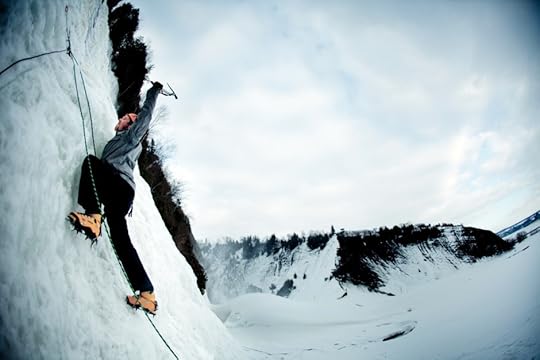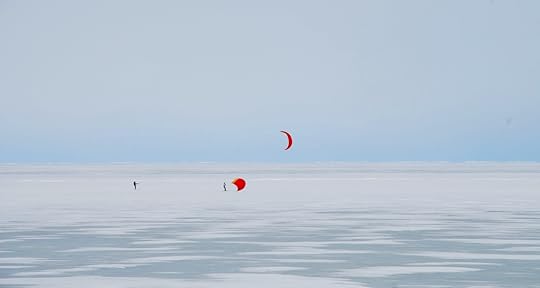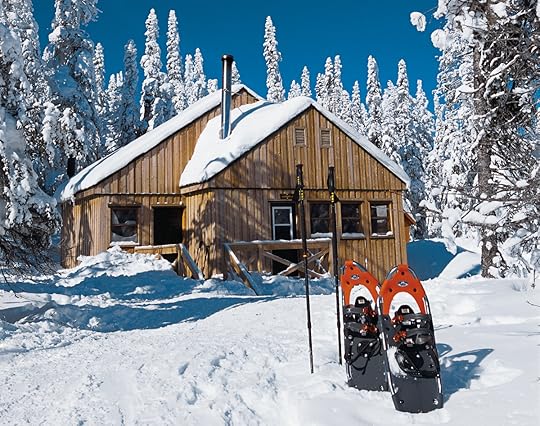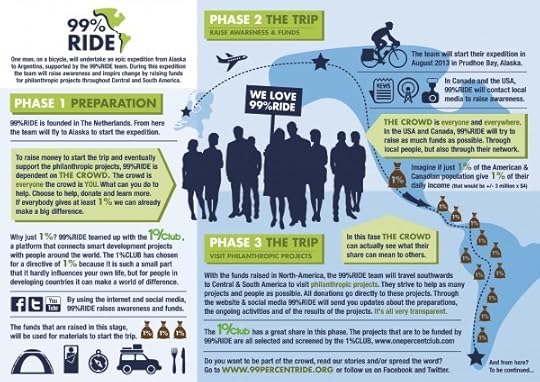Matador Network's Blog, page 2292
March 31, 2014
16 facts about Amish people

Photo: Jack Mallon
My mom grew up Amish in Pennsylvania before her dad decided to leave his community (more on that later), getting shunned in the process. Given the depictions of my kinfolk in pop culture (Amish Mafia?!), I realize most people probably don’t know much of substance about them in reality.
Amish customs differ in different places, so not all of what I know is even true irrefutably, but here’s to fighting off at least some cultural ignorance with a few facts from a guy who grows a beard and builds shitty wooden spice racks for fun.
Amish is not a race.
When people find out my mom was Amish, they often say, “So you’re Amish?” No. It’s not a blood thing. It’s a cultural / religious lifestyle. Just like you can get back into Korn and JNCOs and thus get shunned by the indie crowd you adopted after middle school.
One size overall does not fit all.
People practice ‘Amishism’ differently in different parts of the country. Where some extreme groups ban colors and belts from their wardrobe, others are down with cell-phone hip clips and baseball caps.
They love volleyball.
Okay, maybe not all of them. But the Amish guys used to roll up their overall cuffs and play lake-beach volleyball on Fridays, and all the English chicks would come scope them out (i.e., my cousins and sisters).
They love playing horseshoes.
At a family reunion I saw the most competitive horseshoe game of my life, during which I bore witness to a ~60-year-old Amish guy freaking out like Macho Man Randy Savage after getting a ringer on his first-ever toss. It was equal parts frightening and comforting, yet almost intrusive on my part, like stumbling upon a majestic primate giving birth in a forest.
Don’t call them Mennonite.
Though they’re fundamentally similar, Mennonites and Amish aren’t the same thing. Mennonites are usually less strict: They typically have cars and use electricity. The men can even be hard to identify, but the women wear un-pleated caps — like yarmulkes, but cuter (several of my cousins married wo-Mennonites).
They have mandatory secular experimentation.
At the age of 16, all the angsty Amish teens pack up their straw hats and bonnets and do Rumspringa, the wild time when they leave their community and go crazy in ‘our’ world, testing the proverbial waters of secularism. What’s really beautiful is that they almost always come back, preferring their simple, tight-knit Amish communities, no more wondering what could be. (According to my grandma, sometimes this happens at 15 “if they can get away with it.”)
They grow religious beards.
After Rumspringa they get baptized and join the Amish Church officially, and the men start growing their beards. When they get married, they stop shaving altogether — excepting the forbidden mustache, resulting in the Lincoln-esque ‘Amish neck-beard.’
They’re all dropouts.
The Amish stop schooling after the eighth grade so they can go into their vocations, including knitting, housework, farming, masonry, and carpentry. Kind of makes you wonder why we bother with another four years.
They linguistically profile us.
You know how people call anyone who speaks Spanish a “Spanish person?” If you’ve ever been referred to as “English” by an Amish person, you know how that feels. Unless they called you a Yankee, their other slang term for the non-Amish.
Yes, they speak Amish.
Low German, Pennsylvania Dutch, or just plain Amish — the Amish language is a dialect of German that’s still not quite German, perhaps similar to Portuguese and Spanish.
They love discount damaged food.
One thing my mom carried on from the Amish is a love of ‘bent-n-dent’ stores — those places where you can buy a dented can of beans or expired Lucky Charms for a quarter. A friend told me he saw the same thing in Missouri, so apparently this extends throughout all our country’s Amish.
Their clotheslines defy physics.
I’ve seen Amish clotheslines run from a barn door all the way to the top of an oak tree a whole damn cornfield away. If you had 8 kids and no electricity, I guess yours would, too.
Electricity? More like selec-tricity.
My grandpa once described his ex-community as not disallowing modernity but staying perpetually 100 years behind it. They could borrow phones, cars, or power tools, just not own them, which he thought was dumb. He eventually got yelled at too many times for rigging up gas-powered appliances and finally just said “Eff ya’ll, I’m out,” and left. Now he lives down the road from them.
They pimp their rides.
Who said a horse-and-buggy can’t be dope? I’ve seen some tricked out with turn signals, headlights, and even boom boxes. Nelly never sounded so right.
They’ve got sweet-ass names.
My grandpa’s name is Cornelius, his neighbor’s name is Enoch, Jedidiah is basically the Amish’s ‘John’ (although John is also their ‘John’), and a family tree shows I’m distantly related to people named Pharabee, Dicey, Lemon, and Spicy.
Weird Al did his research.
If you’re still hungry for more Amish insight, listen to Weird Al’s “Amish Paradise.” That pretty much sums it up. 
The post 16 things you didn’t know about Amish people appeared first on Matador Network.

Why give the World Cup to Qatar?

Photo: The Korean Olympic Committee
It’s hard not to love the Olympics and the World Cup. These massive international sporting events are among our best moments as a species: people from all over the world coming together, competing against each other, and then winning or losing generally graciously. We get to hear about countries we’ve never heard of, engage in cultural exchange, and maybe, if you’re an Olympian, have an absolutely insane amount of intercultural sex.
All this is ruined when you bring the politics in. The last few Olympics (London excepted) have been marred by political scandals and human rights abuses. Shortly before the 2008 Summer Olympics, China was brutally cracking down on protests in Tibet and censoring the bejesus out of political dissidents. Then we had the 2014 Sochi Olympics — before the games we saw videos of police and plainclothes thugs beating up homosexuals, and after the event, Russia invaded Crimea.
And we can probably bet that the next three World Cups are going to be rocky. This year’s tournament in Brazil is already marked by massive protests against the absurdity of spending this much money on a sporting event when so many Brazilians live in grinding poverty. The 2018 World Cup is going to be in Russia, so…yeah.
And then the 2022 World Cup is set for Qatar. It’s eight years away, yes, but reports are saying that 900 workers have already died building Qatar’s World Cup infrastructure. Let me repeat that: 900 people have already died, eight years from the start of the event. The International Trade Union Confederation estimates that by the time the event starts, 4,000 migrant workers will have lost their lives.
To give you a sense of comparison, six workers have died in Brazil during the World Cup preparations. There are probably several reasons for the appalling numbers in Qatar, but among them are that migrants have been working in 122-degree heat, their passports and wages are often withheld for months by their employers, and they have overcrowded, unhygienic, and underfed living situations.
The problem, as Marcos Carvalho puts it, is that “governments bid for hosting the World Cup, not countries.” On its face, you’d think that Brazil, the soccer-lovingest nation in a soccer-loving world, would be elated to be hosting the World Cup. But you’d also have to imagine that some futebol-loving fans would nonetheless prefer to have acceptable living conditions instead.
Are we even pretending these events are about the world coming together in peace to play games?
Carvalho’s point stands for the Olympics as well: Both Putin and the Communist Party of China considered their Olympics to be a public relations coup, as a way of saying to the world, “We’re back!” We should hardly be surprised Russia added “…in Crimea!” to that sentence after we all left.
So the question that arises is: Why are we giving world sporting events to Russia, Qatar, and China anyway? Are there any standards to which the International Olympic Committee (IOC) and FIFA will hold their host countries?
It’s of course insanely simplistic to assume that the Olympics are responsible for Russia’s invasion of Crimea, or China’s authoritarianism, but we could, at the very least, just shame them a little bit. The second “Fundamental Principle of Olympism” in the Olympic Charter states that “the goal of Olympism is to place sport at the service of the harmonious development of humankind, with a view to promoting a peaceful society concerned with the preservation of human dignity.”
Uh, yeah, where’s that fundamental principle coming in during the selection process, guys? And I understand that FIFA isn’t held to the same standards as the IOC, but you’d hope they’d at least agree that “human dignity” was a thing they should take into account when organizing the World Cup. Sepp Blatter, the President of FIFA, said, “We have some responsibility, but we can’t interfere in the rights of workers.” Forget ‘human dignity’ — we can’t even get FIFA to engage in basic human decency.
Of course, both the IOC and FIFA have been accused of corruption in their choices of event sites, so you start to wonder how much world peace and harmony really figure into the exercise. The Olympics and the World Cup are immensely expensive events, and given their logistical nature, it would be hard to make them cheap affairs. But as most of the bill is footed by the host country, what if the IOC and FIFA showed that they were committed to at least basic human rights by pulling out of a rights-abusing country once. Just once!
To be fair, we should point out that this tactic could be used against any country, not just Qatar, Russia, or China: If, for example, the Olympics in Salt Lake City had occurred in 2004 instead of 2002, the United States would’ve been right in the thick of the invasion of Iraq, which was, according to the UN Charter, illegal. If the games had been in 2006, it wouldn’t have been too long after Abu Ghraib. The IOC, in totally good conscience, could’ve pulled the Olympic Games from Salt Lake City.
And the thing is, they wouldn’t need to do it again. If that whole “peaceful society concerned with the preservation of human dignity” clause turned out to not be bullshit, then countries that bid for the Olympics in the future will want to make sure they meet the standards set by the IOC. If they don’t think they’ll meet those standards, why make the investment, only to have it pulled, possibly causing widespread destabilization in their country?
Countries that didn’t meet those standards, of course, would still be invited to the Olympics. They just wouldn’t have a chance in hell of hosting. That should be an honor reserved for countries that treat their people, all people, with respect.
Ultimately, we need to ask ourselves this question: Are we even pretending these events are about being the only time the entire world can come together in peace and play games with each other? Or should we just cut the charade and acknowledge that their sole purpose is to earn money and prestige for corrupt rulers and elites? 
The post Why are we giving world sporting events to Russia, China, and Qatar anyway? appeared first on Matador Network.

8 winter adventures in Quebec

Photo: Scott Sporleder
Take a tour through Quebec’s many wide-open wintry spaces with the friendliest tour guides around. One of Quebec’s original forms of transportation, dogsledding is now one of the funnest ways to explore the Canadian wilderness during the wintertime.
You can learn how to drive a team of huskies as they pull your sled between trees and through the snow. They might look all cuddly and adorable, but these dogs can definitely pull more than your weight. Trying to use your own body weight to get them to stop or slow down is more of a vague suggestion than a command, but these huskies know what they’re doing with or without your help. And it’s clear the dogs are completely in their element, having a blast, and totally at ease in the environment.
2. The best backcountry skiing in the East

Photo: Scott Sporleder
The Chic-Choc Mountains on the Gaspé Peninsula have some of the best backcountry slopes in eastern North America, hands down. Summits within the Chic-Chocs are steep, dropping straight down toward the St. Lawrence River, and get dumped on pretty frequently with lake-effect snow, thanks to the nearby gulf.
Your Chic-Chocs experience can be as rugged or as luxurious as you want. The Auberge Gîte du Mont-Albert makes a great starting point for your backcountry adventure, or you can head to the Chic-Chocs Mountain Lodge, Quebec’s first backcountry mountain lodge — and it’s a fancy one — though there are also some backcountry huts scattered around the wilderness. Snowshoe, hike, or skin up to find your lines, or you can arrange a pick-up with Ski Chic-Chocs, the only cat ski operation within Gaspésie National Park.
3. Perfect snowmobile trails

Photo courtesy of Quebec Original
Quebec was the birthplace of the very first snowmobile club in the world, so they definitely know what they’re doing when it comes to maintaining well-groomed trails just for sledders. There are over 20,000 miles of interconnected trails in the province for snowmobiling.
The Lanaudiere and Mauricie regions in Quebec are frequently referred to as where you’ll find the most “perfect” snowmobile trails on the planet. The town of Saint-Michel-des-Saints in Lanaudiere is a huge motoneige hotspot — you can rent all kinds of snowmobiles here, including a variety of super high-performance sleds, before heading off on the surrounding trail systems that interconnect several small-town stops throughout the region. There are about 3,000 miles of trails here, including the renowned Trail 355 — the Pipeline. Here, you’ll find a roller coaster of well-groomed trails for miles and miles, all of which come with awesome wilderness views.
4. Ice climbing

Photo: Scott Sporleder
During the winter in Quebec, there’s literally no way to avoid the cold, so you might as well embrace it. Montmorency Falls, the highest in the province, is a hugely popular ice climbing spot outside of Quebec City. There are routes up the falls of varying intensity, and it’s not a bad spot for beginners to work on their swings or hop in on a guided lesson/tour up the falls.
Or, head to Northern Quebec for monster ice pillars in brutal locations, like the Mulot (90-100 degree pitches) and Capteur de Reve, one of the most elusive climbing destinations in the area, as it rarely forms climbable lines.
5. Seeing the Northern Lights from an igloo

Photo: peupleloup
When Quebec’s nights get longer and temperatures drop, you can make the trek north to try to catch a glimpse of the aurora borealis. One of the best spots to witness the phenomenon is Kuujjuaq, Nunavik, where the open tundra and the absence of city lights make the Northern Lights more pronounced. There are several adventure outfitters in the area to help keep you alive in the -25 C winter and to show you how to navigate using natural markers like the sun, stars, and wind. They’ll also help get you settled into your igloos (some operators will even teach you how to build them) and transport you around the tundra via snowmobile or dog sled.
The Northern Lights might be unpredictable, but even if you miss them, sleeping out in a traditional Inuit igloo with herds of caribou ambling by is a pretty uniquely Arctic experience.
6. Saguenay Fjord National Park

Photo: erwan.lher
Fjords aren’t just for Scandinavia — Quebec’s Saguenay Fjord is the southernmost fjord on the continent and one of the ten longest in the world. There’s tons of wildlife in the surrounding national park, including the endangered peregrine falcon and about a thousand beluga whales that live in the area year-round.
And during the colder winter months, once the water is frozen over, there’s tons of ice fishing for Atlantic cod, rainbow smelt, Greenland halibut, and Atlantic redfish. You can also snowshoe up to higher viewpoints for aerial views of the fjord, or even skin up to some backcountry ski trails for runs with an epic backdrop.
7. Snowshoeing, in the land of snowshoeing

Photo courtesy of Quebec Original
When it comes to traversing the subarctic winter landscape of northern Quebec, there’s no more fitting means than by snowshoe. This form of conveyance has been used in the region for thousands of years, and it was the Inuit and First Nations peoples of Quebec who developed the most advanced shoe designs, prior to the advent of modern manufacturing.
During the spring, you can travel up to one of North America’s great wildernesses: Kuururjuaq National Park, near the tip of the Quebec-Labrador Peninsula, where the Koroc River flows through a forested valley between the 5,000ft peaks of the Torngat Mountains. Here, you can arrange multi-day snowshoe treks that include nights in heated tents and wilderness camps, knowledgeable local guides, and some of the best winter scenery you could hope to find.
8. Because it looks like a fairy tale

St. John Gate, Quebec City. Photo: Rélie
There’s not many cities in North America quite like Quebec City. Walking down Rue du Petit-Champlain or one of the many winding streets in Old Town Quebec during the winter feels a lot like stepping into an animated Disney cartoon, complete with talking wildlife and some kind of sparkly magic dust.
Quebec City is one of the very few walled cities in North America. During the winter, when the St. Louis Gate is illuminated and horse-drawn carriages clop through the snow, it’s easy to forget where you are. 
 This post was sponsored by Québec Original. To learn more about exploring Quebec’s natural wonders, click here.
This post was sponsored by Québec Original. To learn more about exploring Quebec’s natural wonders, click here.
The post 8 reasons you need to see Quebec in the winter appeared first on Matador Network.

March 30, 2014
Paralyzation didn't stop this surfer
Barney Miller is different from most other Australian surfers: He’s quadriplegic. Miller’s got a severe spinal cord injury that paralyzes him from the waist down. Spinal cord injuries affect 3 million people around the world, so Miller is raising awareness for an upcoming race called the Wings for Life World Run, taking place all over the world to raise money and awareness for spinal cord injury research. You can see if there’s a race near you.
For those noticing that he has some use of his arms (which would make him a paraplegic and not a quadriplegic), he was initially diagnosed as a quadriplegic and has since gained some of the use of his arms back. Which makes this even more incredible. 
The post Just because you’re paralyzed doesn’t mean you can’t surf appeared first on Matador Network.

March 29, 2014
Nun sings on The Voice
THE ONLY NUNS I ever knew were the stodgy ones who taught me at the Catholic high school I attended. And none of them even came close to rocking my uniform-compliant penny loafers off like this member of the Ursuline Sisters of the Holy Family did.
I’ve always preferred The Voice to American Idol, for the simple reason that the talent is initially based on the quality of singing, rather than appearance, and marketability. It might not remain as such as the show progresses, but it gives people like Sister Cristina Scuccia, a 25-year old nun from Sicily, the chance to show the world that she is capable of serving God in the coolest of ways.
Unless you speak Italian, you won’t be able to recognize the commentary that follows after the 2:00 mark, but the heat of the performance is felt at the beginning anyway. 
The post What comes out of this Italian nun’s mouth will completely blow you away appeared first on Matador Network.

British guide on how to be Canadian
Writer and Brit James O’Malley recently went to Canada, and he made a supercut of him doing all the things Canadians do. The results, of course, are hilarious (“Tim Hortons” and “welding” are right next to each other, because why not?), and someone should give O’Malley a pile of money to do this in every country.
Also, a kudos to anyone who went up and visited Canada during the snowstorms and the polar vortex. It may not be the most balmy and pleasant time to be there, but it’s the most authentic. 
The post A British guide on how to be Canadian appeared first on Matador Network.

March 28, 2014
Your gender dictates what you eat

Photo: Jiuck
A VIDEO ABOUT Arnold Schwarzenegger cooking a “Steak & Egger Sandwich” went viral recently. Basically, these guys cook a 78,000-calorie, protein-packed monstrosity — on the former governator’s very own tank.
With the men’s banter revolving around the masculine ideal of muscularity, it’s hard to ignore the fact that no women were included in the creation, or consumption of, this “sandwich.” It’s a glaring reminder that women are not, or should not be, interested in eating large quantities of food; that is an exclusively male pastime.
I had a conversation with two of my best girl friends about how we feel embarrassed whenever we eat more than the men in our lives, as we freely devoured chips, brownies, and fudge in the privacy of my basement, knowing there would be little judgment between the three of us. For most women in Western societies, there’s usually shame in hunger, tied to the symbolic nature of food in morality and sexual desire.
Men are expected to have voracious appetites, representing power, success, and release, while eating abstemiously is inherently feminine, signifying self-control, goodness, and selflessness. The basic act of eating, as illustrated in the Steak & Egger video, has complex meaning and cultural symbolism that varies greatly by gender.
Most of us are aware of the high prevalence of serious eating disorders in the US, such as anorexia nervosa and binge eating disorder. What’s just as concerning as these diagnosable disorders is the blind eye we collectively turn to the pervasive disordered eating habits that are normalized and even encouraged in American culture. These eating behaviors look very different for men and women, with women expected to subsist on meager meals and find shame in consumption, and men congratulated after devouring 2,000 calories in one sitting.
If we stopped hating our bodies, a lot of billion-dollar industries would go out of business.
These patterns are not unique to the United States, or the 21st century; in other cultures throughout the world, men are provided with, and expected to eat, more food, mimicking the gender roles of our ancestors, in which the men did the hard labor (and therefore needed more energy). Today, the division of labor isn’t quite so extreme, yet we continue to live in a world where men are allowed to eat more than women.
A woman with a large appetite is considered unhealthy, slovenly, and lacking self-restraint. Conversely, men who eat large portions are thought to be strong, masculine, and formidable. We assign foods with distinct meanings for different genders, forgetting that on the basic level, food is meant to simply energize and sustain us. Men have unique pressures to attain the hypermasculine muscular ideal, and women are supposed to thrive for emaciation.
These aesthetic ideals have replaced survival as the primary source of modern gendered eating norms.
American culture values physique above all other attributes, and, as a result, has different expectations of men and women with regard to food consumption. As a generalization, women skip meals, binge behind closed doors, and spend hours on the elliptical, while men fill their bodies with steroids, replace real meals with protein shakes, and build their muscles until they tear — there’s no doubt that all genders are conditioned to hate their bodies.
If we stopped hating our bodies, a lot of billion-dollar industries would go out of business. Think of all the weight-loss products, cosmetic companies, and fitness establishments that thrive off of our insecurities. We must start accepting our own and each other’s bodies, and recognize that we are not our bodies; only then can we stop placing so much significance on the quantity or types of food we eat.
If men and women weren’t faced with such extreme physical expectations, they would be able to consume food for nourishment and enjoyment, without worrying about weight, calories, muscle mass, or clothing size. 
The post You are what your gender eats: On nutrition and body image in American culture appeared first on Matador Network.

Biking from Alaska to Argentina
THE 99% RIDE is an awesome travel / philanthropy project. Dirk flew to the Western Hemisphere from the Netherlands to ride his bike from Alaska to Argentina in support of small communities in Central and South America. He’s traveling with a crew of two people in a support van, sleeping in a tent, sometimes staying with people, most of the time not.
Dirk will travel 17,000 miles and through 15 countries. He’s made his way south from Alaska and was recently in Tijuana with plans to travel to the tip of South America.
Click on the infographic below for more info. To donate and help Dirk in his mission, visit his site. 
The post Follow along on an Alaska-to-Argentina bike ride with a cause appeared first on Matador Network.

Woman hears for the first time
WHO DOESN’T love a good tear-jerker on a Friday afternoon. This video is of Joanne Milne, a 39-year-old British woman (deaf since birth and blind since her 20s due to Usher Syndrome) who had to wait four weeks after the cochlear implants operation to have them turned on.
For more details on the story, check out the Birmingham Mail. 
The post Woman hears for the first time and cries, so will you [vid] appeared first on Matador Network.

This sport's being exported to India
Most of us don’t think of India as a typical haven for hockey lovers, but it just so happens that hockey in the Himalayas is a thing. (Also, alliteration rocks.)
Canadian Andrew Wahba is the man behind True Travellers Society, a website aimed at local integration and “off the tourist track” experiences. He started a fundraising drive to deliver hockey equipment to those living in Ladakh, India. His friend James Turner had been a hockey coach there, and he explained how the kids loved the sport and worked hard to maintain their rink, but accessing equipment was a huge barrier.
Andrew says gathering the equipment was a team effort, and True Travellers Society garnered a lot of support from Andrew’s home province of Saskatchewan. The mission was even aided by a local nonprofit called Ranch Ehrlo — an organization that provides an outdoor hockey program for children who miss out on sporting opportunities due to poverty or other barriers.
Canadian hockey fans. Gotta love ‘em.
Andrew and True Travellers Society ended up receiving over 500 kilograms of gear from all over Saskatchewan. The video says it all. 
The post You won’t believe what sport is being exported to India (Video) appeared first on Matador Network.

Matador Network's Blog
- Matador Network's profile
- 6 followers




